One of the highest-graded examples of a 1907 Ultra High Relief Double Eagle, PR69, tied for the finest known, will be up for grabs Aug. 10 when it is offered through Heritage Auctions, an Event Auctioneer Partner of the ANA’s World Fair of Money, in The Harry W. Bass, Jr. Core Collection, Part IV US Coins Signature® Auction.
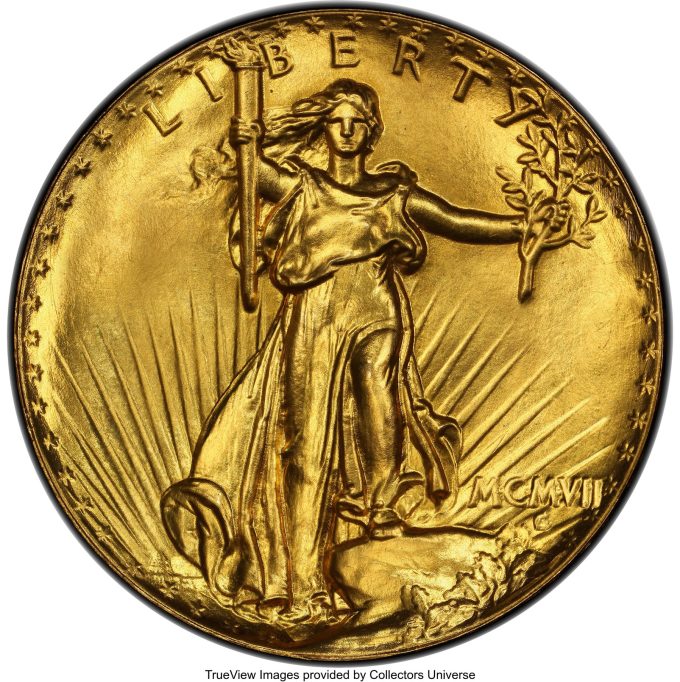
As was the case with the first three auctions of coins from the Bass Core Collection, proceeds from this event will benefit the dozens of Dallas-based nonprofits supported by the Harry W. Bass Jr. Foundation, with a particular emphasis on early childhood education and literacy in Dallas.
"Harry Bass Jr. spent nearly his entire life in Dallas, after his family moved there when he was very young," says Todd Imhof, Executive Vice President at Heritage Auctions. "He spent much of his adult life assembling one of the most extraordinary numismatic collections anywhere — at the time of his death, it was easily one of the largest and most in-depth trove of U.S. Federal gold coins ever assembled.
"His knowledge and love of numismatics is matched only by his loyalty to his adopted hometown. Thanks to the generosity of the Harry W. Bass Jr., Foundation, Dallas-area nonprofits will be benefiting from the $62.6 million already raised in the previous three auctions — a total that will increase through this extraordinary auction."
The 1907 Ultra High Relief double eagle was the first to be offered publicly when it crossed the auction block in 1920. The 1907 Ultra High Relief double eagle has few peers when it comes to rarity, demand and aesthetic appearance. Held in the private collection of Washington, D.C., collector John H. Clapp until his death in 1940, it was sold along with the rest of Clapp’s collection to Louis E. Eliasberg, Sr. in 1942 for more than $100,000 in what was, at the time, one of the largest recorded numismatic transactions. Eliasberg kept it until his death in 1976, after which it was sold to Bass in 1982 for $242,000. Since then, it has remained out of public reach … until now.
Another top draw in the auction will be the finest known 1829 Capped Head Left Half Eagle, PR66+ Cameo, the only proof 1829 Small Date half eagle in private hands. The last time an 1829 Capped Head Left half eagle crossed the block at Heritage Auctions, it brought a record winning bid of $2.88 million.
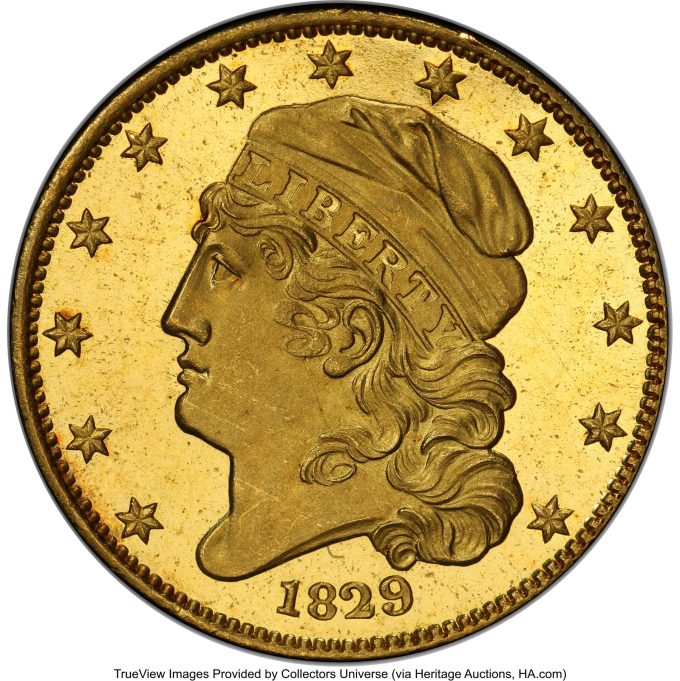
That magnificent coin, which more than doubled the previous record, from the Harry W. Bass, Jr., Core Collection, Part III, was a gorgeous example of the Large Date variety. The 1829 Capped Head Left half eagle, with the Small Date and planchet, is a landmark rarity that stands out from its peers, even in a series that is stacked with rare issues. It represents the first and rarest date of a new design type for the half eagle that was struck from 1829 through 1834. PCGS CoinFacts estimates that just 8 or 9 business-strike examples are known, and PCGS Founder John Dannreuther has confirmed the existence of two proof specimens, with one of those included in the National Numismatic Collection at the Smithsonian Institution.
Another coveted prize, an 1828/7 Half Eagle, BD-1, MS64, is a magnificent example of a prominent rarity in the early U.S. gold series. Like the 1907 Ultra High Relief double eagle, this coin also is tied for the finest grade: this example is one of just five traced examples, and one of the other four is housed in the National Numismatic Collection at the Smithsonian Institution.
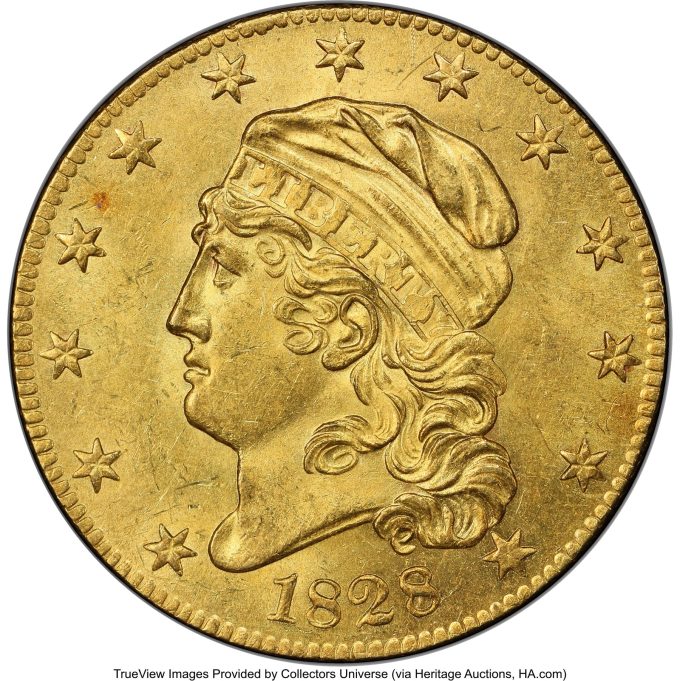
A 1799 $10 Large Obverse Stars, BD-10, R.3, MS66 PCGS, tied for the finest known of the variety, is one of just three early eagles that PCGS has certified MS66; the third is a 1795 Small Eagle ten dollar gold piece that PCGS grades MS66+.
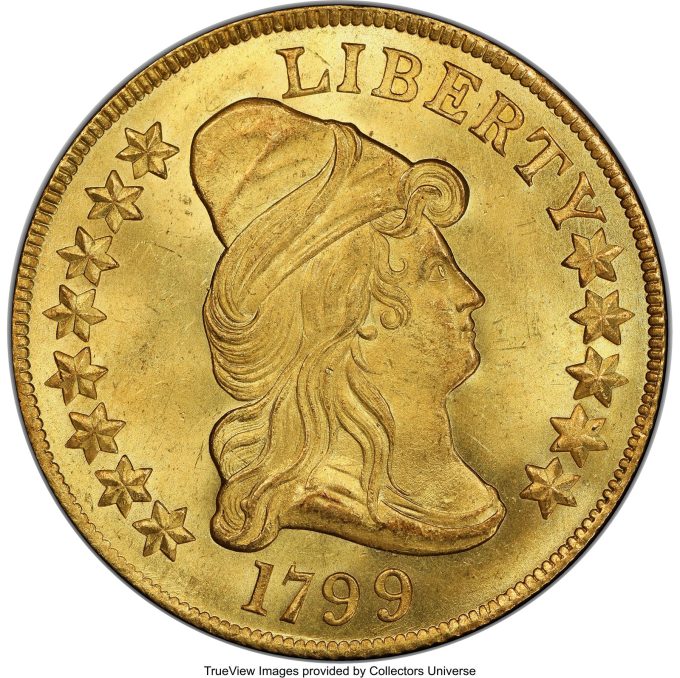
His acquisition of Clapp’s coins helped Eliasberg become the only collector ever to complete a collection of U.S. coins by date, mintmark and major variety. Like the 1907 Ultra High Relief double eagle, it was sold by the Eliasberg estate to Bass after Eliasberg’s death, and has remained unavailable until this auction.
One of only six or seven remaining examples in any grade of a 1798 Small Eagle Five Dollar, BD-1, R.7, AU53 PCGS is another series rarity that will find a new home when it is sold in this auction. Two of the coins are included in the National Numismatic Collection at the Smithsonian, putting them out of the reach of collectors forever. This example was discovered in 1924 by Fort Worth coin dealer B. Max Mehl, who sold it to Clapp, who kept it until he died in 1940.
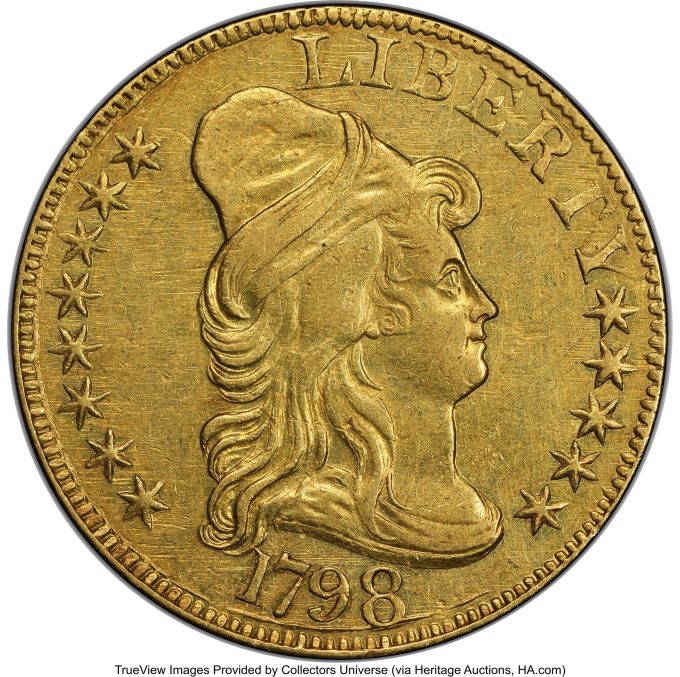
An argument can be made that the 1907 Eagle Rolled Rim MS64 PCGS. CAC should be considered a circulation issue, rather than a pattern. Most of the original 31,500 that were struck were melted, leaving a population of 50 — including the offered example — that were preserved and sold to collectors, museums and government officials. Two headed to the Metropolitan Art Museum and another 10 to the Mint Bureau. Most of the 50 Rolled Rim Indian eagles that were preserved in 1907 remain today, but they are prized by collectors and rarely made available to the public.
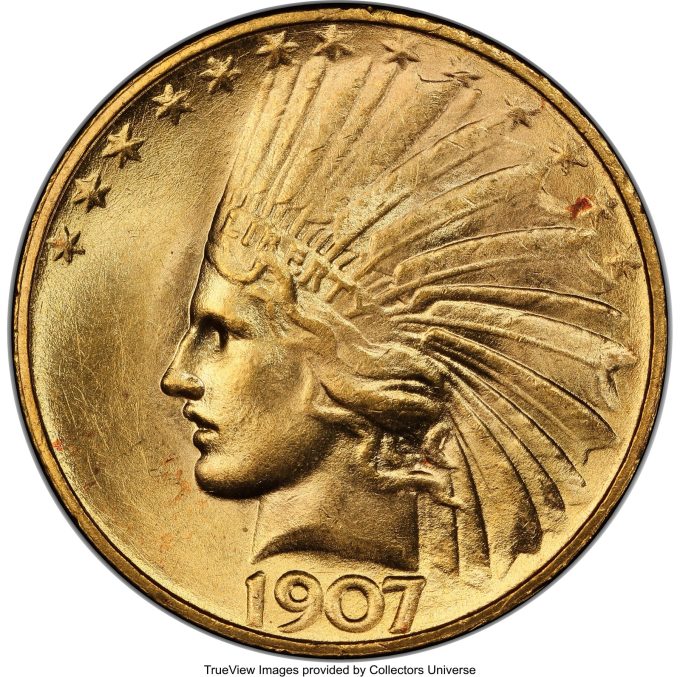
Dannreuther estimates that the finest certified example of an 1863 Three Dollar, PR67+ Deep Cameo is one of just 14-16 remaining examples of the Civil War issue of which just 39 proofs and 5,000 circulation strikes originally were produced. Dannreuther’s estimate is considered a high percentage, perhaps the result of war-year gold hoarding. PCGS has certified just one other PR67+ Deep Cameo proof in the entire three dollar gold series — a beautiful coin that also came from the Bass Core Collection and sold for $336,000.
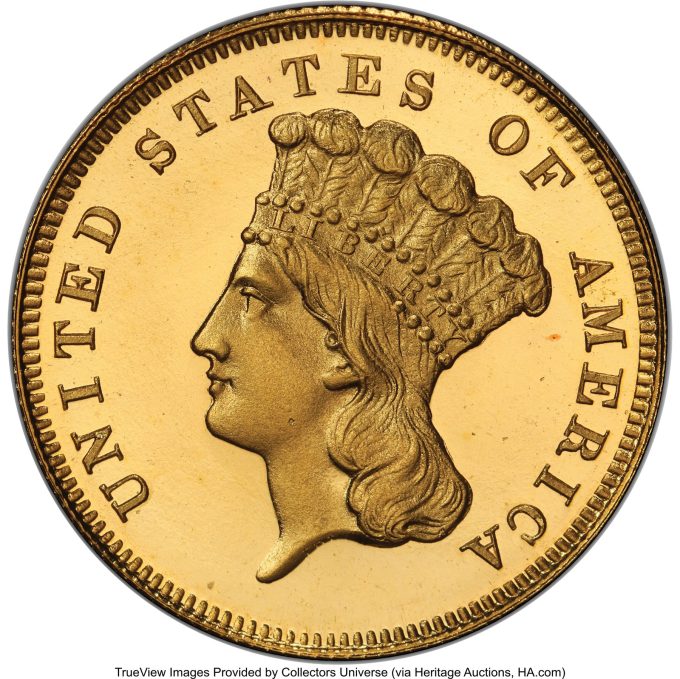
An extraordinary 1877 Fifty Dollar, Judd-1547, Pollock-1720, Low R.7, PR66 Red and Brown PCGS. CAC is the second-finest of 10 confirmed examples of this rarity. Fifty dollar gold pieces were struck exclusively in 1877 to test the viability of coin with a denomination larger than the regular double eagle.
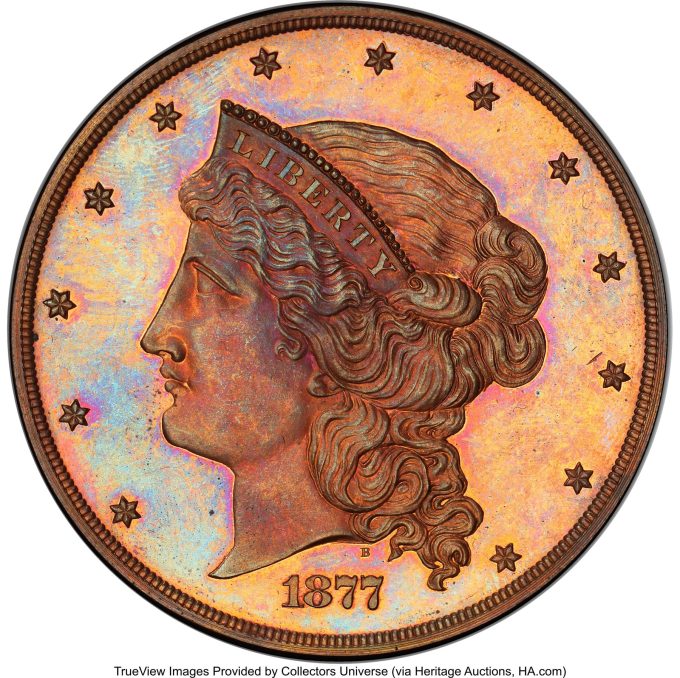
Two examples — Judd-1546 and Judd-1548 — were manufactured in gold, each of which is permanently housed at the Smithsonian’s National Numismatic Collection, making examples struck in copper the only ones available to collectors. The coin offered here is headed to the auction block for the first time in 53 years.
About Heritage Auctions
Heritage Auctions is the largest fine art and collectibles auction house founded in the United States, and the world’s largest collectibles auctioneer. Heritage maintains offices in New York, Dallas, Beverly Hills, Chicago, Palm Beach, London, Paris, Geneva, Amsterdam, Brussels and Hong Kong.
Heritage also enjoys the highest Online traffic and dollar volume of any auction house on earth (source: SimilarWeb and Hiscox Report). The Internet’s most popular auction-house website, HA.com, has more than 1,750,000 registered bidder-members and searchable free archives of more than 6,000,000 past auction records with prices realized, descriptions and enlargeable photos. Reproduction rights routinely granted to media for photo credit.





